When it comes to running, choosing the right pair of shoes is crucial for optimal performance and comfort.
In this blog post, we will compare two popular running shoes from Brooks: the Cascadia 16 and the Caldera 6.
Understanding their key features, technologies, and suitability for different types of runners will help you make an informed decision.
| Features | Brooks Cascadia 16 | Brooks Caldera 6 |
|---|---|---|
| Cushioning | BioMoGo DNA midsole with Pivot Post System | DNA Loft midsole with built-in rock plate |
| Upper Material | Mesh and synthetic overlays | Engineered mesh with strategic overlays |
| Weight | Approximately 298g (men’s) / 269g (women’s) | Approximately 301g (men’s) / 266g (women’s) |
| Traction | TrailTack rubber outsole with multidirectional lugs | TrailTack rubber outsole with multidirectional lugs |
| Stability | Moderate stability | Neutral |
| Drop | 8mm | 6mm |
| Fit | Standard fit | Standard fit |
| Heel Counter | Internal heel counter | External heel counter |
| Toe Box | Roomy toe box | Roomy toe box |
| Breathability | Mesh upper promotes breathability | Engineered mesh enhances airflow and breathability |
| Durability | Durable construction for rugged trails | Durable materials with reinforced areas for longevity |
| Versatility | Suitable for various terrains and distances | Versatile for trail running and longer distances |
| Recommended Use | Trail running, hiking, and outdoor activities | Trail running, ultra-distance, and long outdoor runs |
| Check Price on Amazon – Men Check Price on Amazon – Women | Check Price on Amazon – Men Check Price on Amazon – Women |
You May also like – Brooks Ghost 15 vs Cascadia 16: Which Running Shoe is Right for You?
Overview of Brooks Cascadia 16
The Brooks Cascadia 16 is a trail running shoe that combines comfort, responsiveness, and versatility. Its key features include:
- Cushioning System: The Cascadia 16 is equipped with Brooks’ BioMoGo DNA cushioning technology, providing a plush and responsive feel with every stride. It absorbs impact and delivers a smooth ride on various terrains.
- Lightweight Design and Breathability: The shoe’s lightweight construction allows for effortless movement, while the breathable upper keeps your feet cool and dry during long runs.
- Versatility: The Cascadia 16 is suitable for a wide range of runners, including trail enthusiasts, hikers, and those who enjoy off-road adventures. It offers stability and protection without compromising on flexibility.
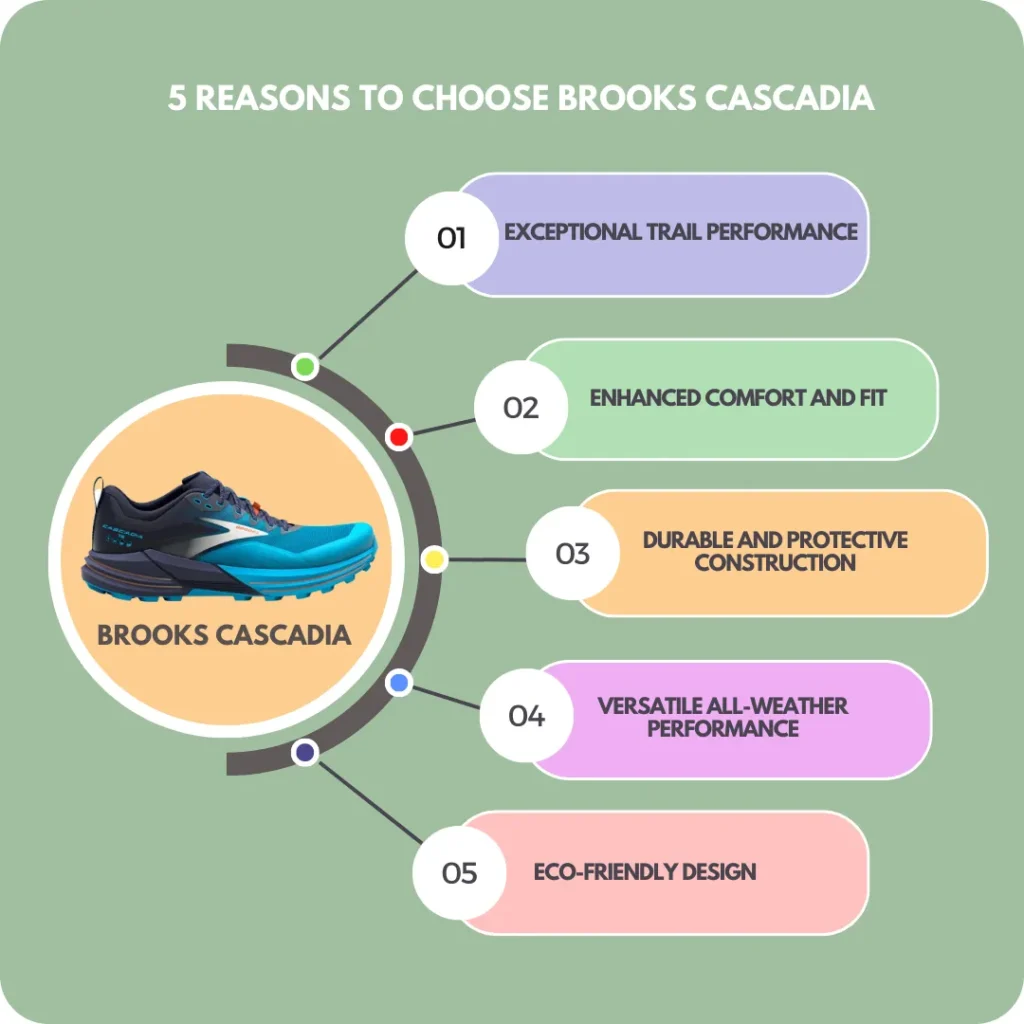
Also Read – Brooks Cascadia 16 vs Catamount 2: Which Running Shoe is Right for You?
Overview of Brooks Caldera 6
The Brooks Caldera 6 is another trail running shoe designed for runners who require stability and support. Here are its standout features:
- Stability and Support: The Caldera 6 features Brooks’ Guiderail system, providing enhanced support for overpronators. It guides your foot into a natural alignment, reducing the risk of injuries and improving overall stability.
- Cushioning System and Energy Return: With the addition of Brooks’ DNA LOFT V3 cushioning technology, the Caldera 6 offers plush cushioning and excellent energy return. It delivers a responsive and energetic running experience.
- Durability and Traction: The shoe’s durable outsole and multidirectional lugs provide exceptional grip on various terrains, ensuring you can conquer challenging trails with confidence.
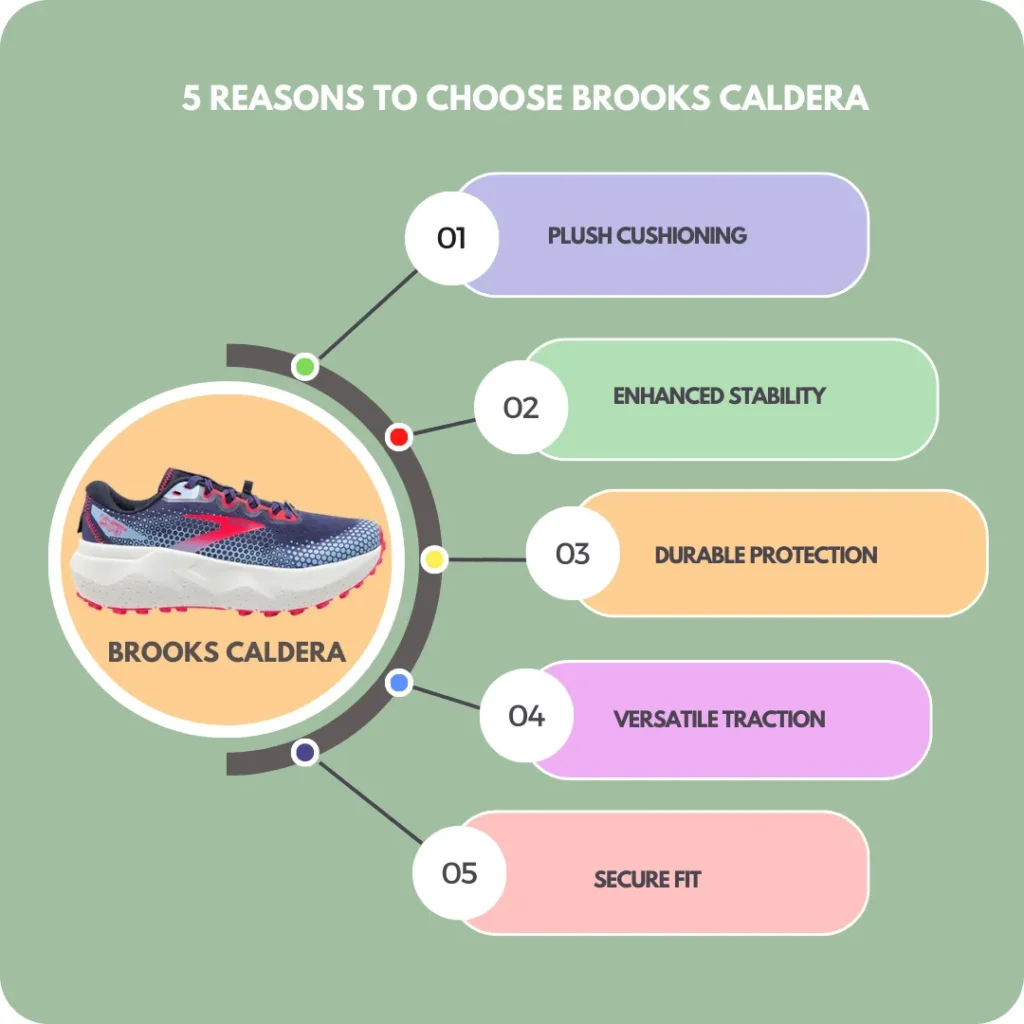
Comparison: Brooks Cascadia 16 vs Caldera 6
When comparing the Brooks Cascadia 16 and the Caldera 6, several factors come into play:
Design and Aesthetics
Both shoes feature visually appealing designs, with the Cascadia 16 leaning towards a more traditional trail shoe appearance, while the Caldera 6 offers a sleeker and more modern look.
Cushioning and Responsiveness
The Cascadia 16 provides a softer and more cushioned feel, suitable for runners who prioritize comfort.
On the other hand, the Caldera 6 offers a balance of cushioning and responsiveness, making it a preferred choice for those seeking a more responsive ride.
Also Read – Brooks Cascadia 16 vs Divide 3: Which Running Shoe is Right for You?
Stability and Support
While both shoes offer stability, the Caldera 6’s Guiderail system specifically caters to overpronators, providing targeted support for a more efficient and stable running experience.
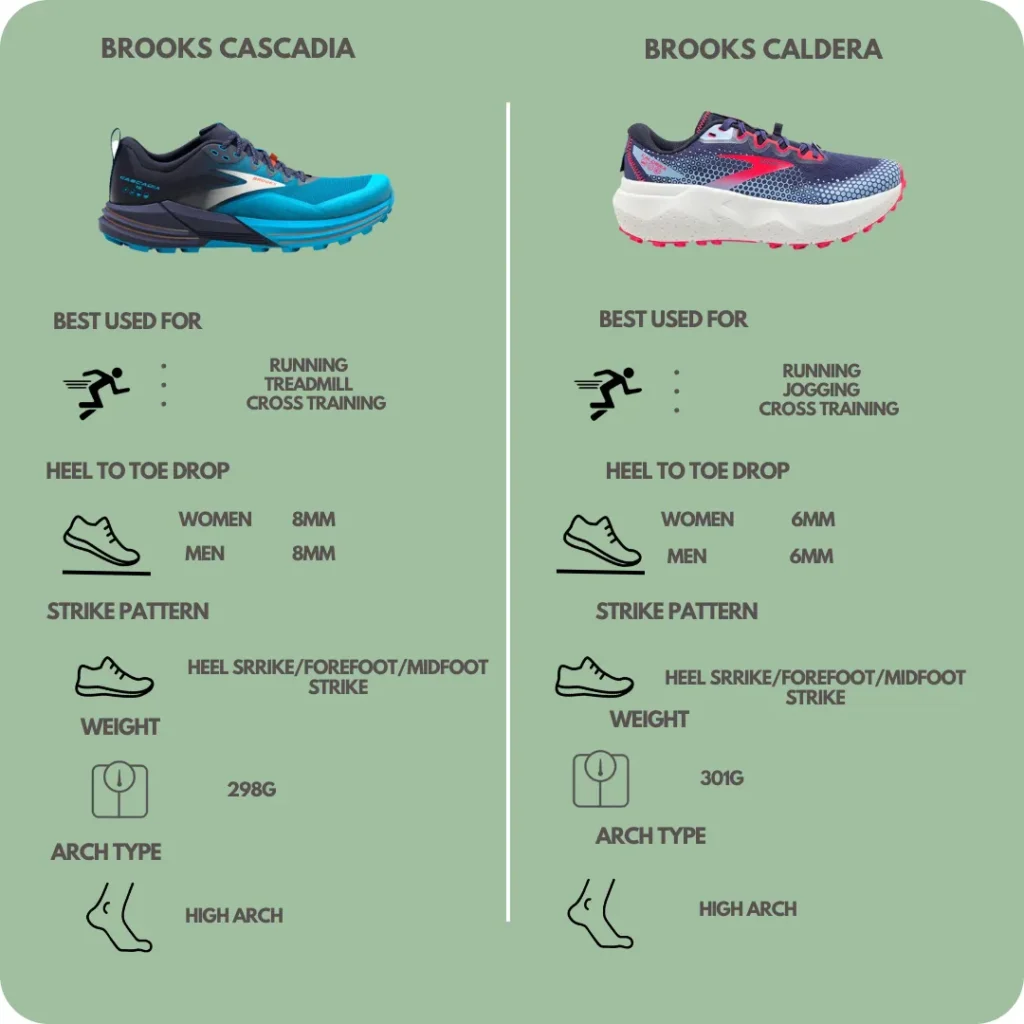
Upper
Both the Brooks Cascadia 16 and Caldera 6 feature breathable mesh uppers that promote airflow and keep your feet cool during runs.
They also incorporate synthetic overlays to provide support and protection.
The key difference may lie in the specific design and placement of the overlays, as well as any additional features tailored to the unique requirements of each shoe.
Midsole
Both the Brooks Cascadia 16 and Caldera 6 feature responsive midsoles with Brooks’ BioMoGo DNA cushioning technology.
The Cascadia 16 emphasizes a balance between cushioning and energy return, while the Caldera 6 aims for a plush underfoot experience.
Also Read – Brooks Cascadia 16 vs Divide 3: Which Running Shoe is Right for You?
Outsole
Both shoes have durable outsoles with effective lug patterns and rubber compounds for reliable traction on trails.
The choice between them may depend on your specific preferences for cushioning level and the type of terrain you’ll be running on.
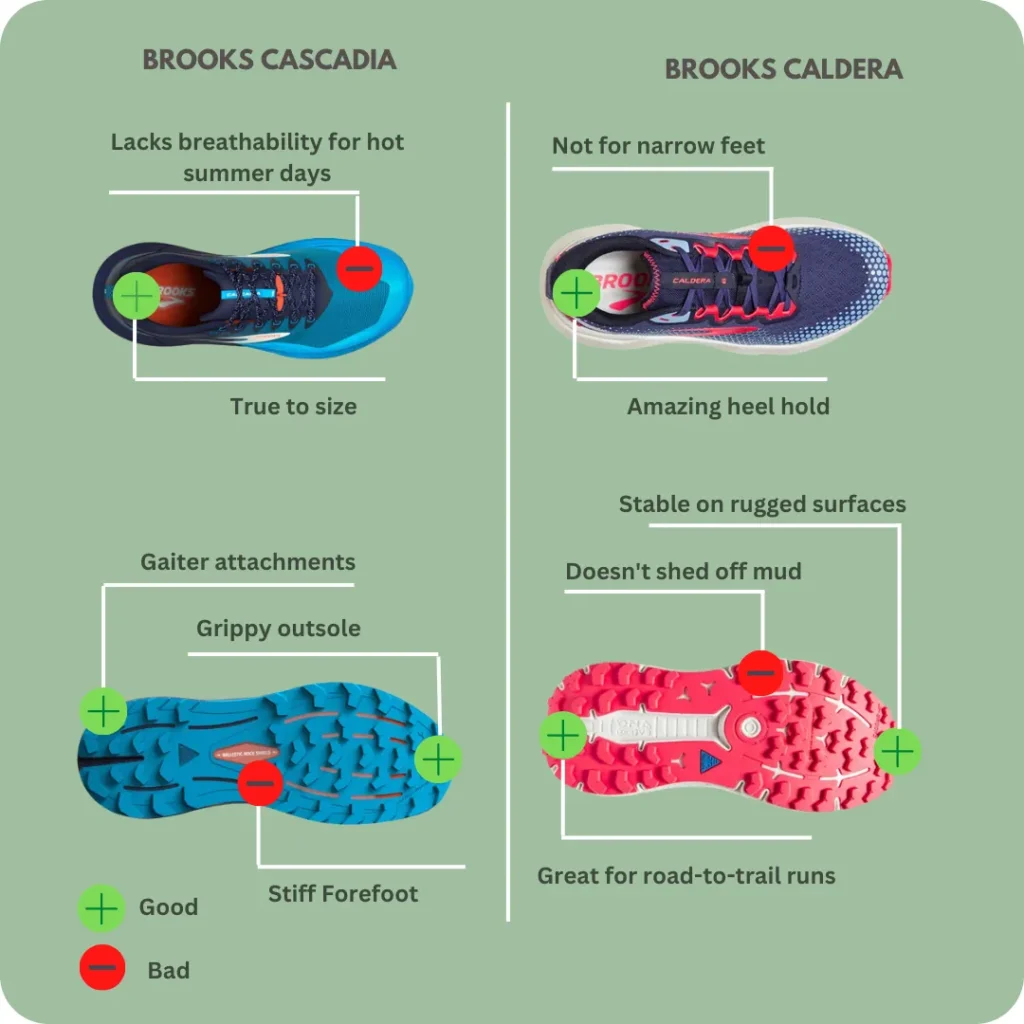
My Personal Experience with Brooks Cascadia 16 and Brooks Caldera 6
As an avid trail runner, I have had the opportunity to test out several running shoes over the years.
Among them, the Brooks Cascadia 16 and Caldera 6 have emerged as my personal favorites, each offering unique features that enhance my trail running experience in different ways.
The Brooks Cascadia 16 quickly became my go-to shoe for its exceptional comfort and versatility.
The cushioning system in the Cascadia 16 provides a plush and responsive feel, absorbing the impact of rugged terrains and uneven surfaces.
It offers a smooth ride and keeps my feet comfortable, even during longer runs.
The lightweight design of the shoe is also a standout feature, allowing me to maintain agility and speed on the trails.
The breathable upper keeps my feet cool and dry, preventing discomfort and blisters.
The Cascadia 16’s durability is impressive, as it has withstood countless trail adventures without showing significant signs of wear.
Overall, it has become my trusted companion on challenging terrains.
On the other hand, the Brooks Caldera 6 has won my heart with its excellent stability and support.
As an overpronator, I rely on a shoe that can provide the necessary correction and prevent potential injuries.
The Caldera 6 offers exceptional stability and keeps my foot aligned throughout my runs.
The cushioning system is superb, providing both comfort and energy return, which helps propel me forward on the trails.
The shoe’s durability and traction are remarkable, ensuring a reliable grip even on slippery surfaces.
I appreciate the Caldera 6’s ability to withstand rugged conditions while keeping my feet protected and secure.
Both shoes have received high praise from users, and I can understand why.
They excel in different areas and cater to specific needs.
While the Cascadia 16 is my top choice for its overall comfort and versatility, the Caldera 6 is my preferred option when it comes to stability and support.
My personal favorite between the Brooks Cascadia 16 and Caldera 6 is the Cascadia 16.
Its exceptional comfort, lightweight design, and versatility make it an ideal choice for trail running.
However, I must acknowledge the Caldera 6’s remarkable stability and support for overpronators, making it a fantastic option for those with specific needs.
Ultimately, both shoes have their strengths, and choosing between them depends on individual preferences and requirements.
Considering your running style, foot type, and specific requirements will help determine which shoe is the best fit for you.
For a detailed side-by-side comparison of features, technologies, and performance, refer to the chart below:
You May Also Like – Brooks Catamount 2 Vs Caldera 6: Which Running Shoe is Right for You?
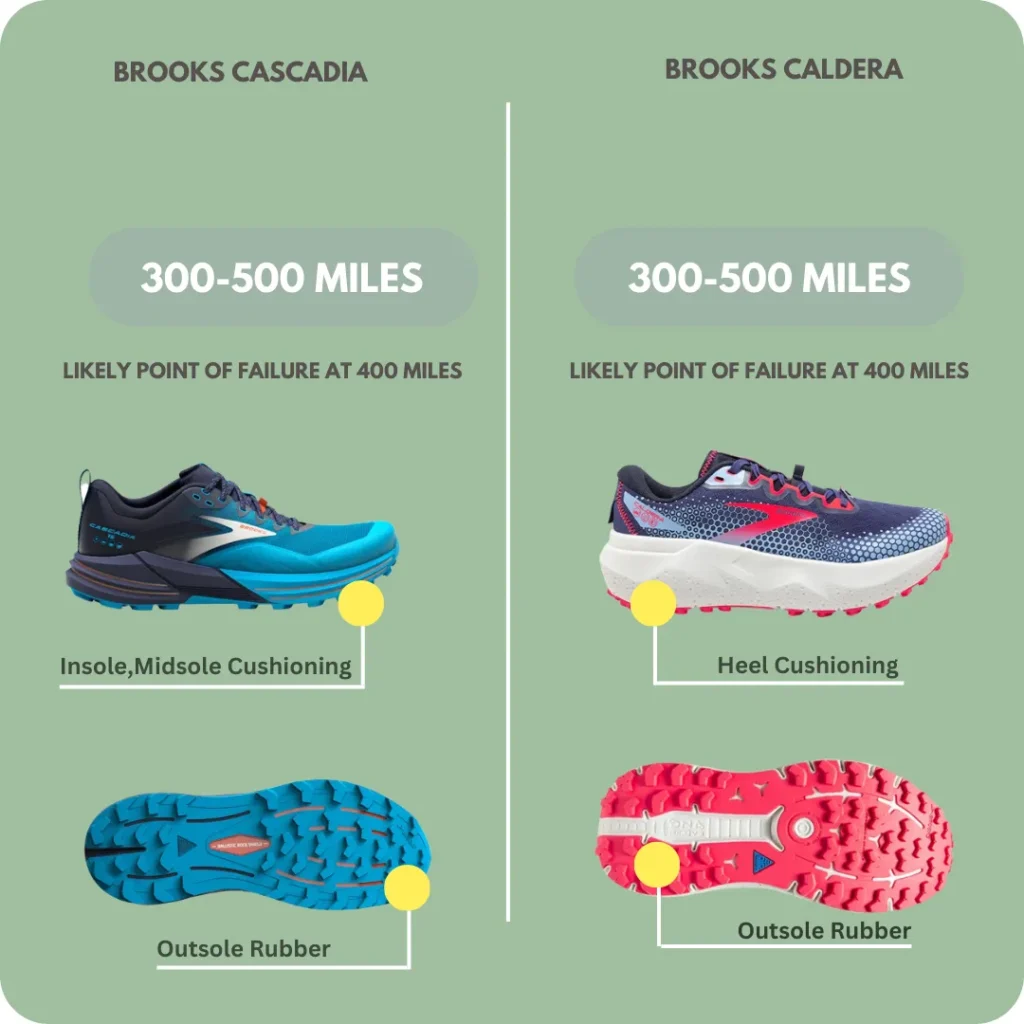
Final Verdict
Selecting the right running shoe is essential for a comfortable and enjoyable running experience.
The Brooks Cascadia 16 and the Caldera 6 offer distinct advantages depending on your needs.
We encourage you to try on both shoes to determine which one suits you best.
Consider factors such as your running style, foot type, and preferences for cushioning, stability, and responsiveness.
Exploring more detailed reviews or visiting a local store for a personalized fitting can provide additional guidance in making an informed decision.
Remember, finding the perfect running shoe is a personal journey, and the right choice will significantly impact your performance and comfort.